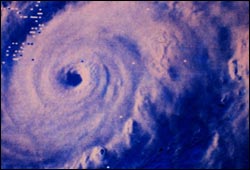Will an asteroid impact with Mars?
 Update:
Update: The risk that an asteroid will hit Mars on 30 January has dropped to 1 in 10,000, essentially ruling out an impact, NASA researchers say.
The chance that 2007 WD5 could have hit Mars highlighted the risk that a similar space rock could one day slam into Earth.NASA says that within a few years, it should find 90% of potentially dangerous asteroids larger than 1 kilometre across. But smaller space rocks such as 2007 WD5 may go undetected until shortly before a possible impact, meaning the only recourse would be to evacuate any populated areas that appeared to lie in its path.
I sure hope so.
This is very unscientific, but the way I look at it, if it crashes into Mars, it cannot hit the Earth. If it misses Mars, which is more probable at the moment, then it becomes or continues to be another near Earth object that can cause us trouble in the future.
Observations of the asteroid between Dec. 29 and Jan. 2 allowed astronomers to slightly lower the space rock's odds of striking Mars to about 3.6 percent (down from 3.9), giving the object a 1 in 28 chance of hitting the planet, according to Tuesday report from NASA's Near Earth-Object program office at the Jet Propulsion Laboratory in Pasadena, Calif.
More observations may further reduce the asteroid's impact chances to nil, NEO officials said. The space rock's refined course stems from observations by astronomers at New Mexico Tech's Magdalena Ridge Observatory.
But if WD5 does smack into Mars, some astronomers have a fair idea of what havoc it may spawn. The likely strike zone would be near the equator, but to the north of the current position of NASA's Opportunity rover at Victoria Crater, NASA officials have said.
Mark Boslough, a collision dynamics expert at New Mexico's Sandia National Laboratory, said the atmosphere at Mars' surface is similar to that of Earth at an altitude of 12 miles (20 km). Some space rocks that target Earth explode under the pressure created as they stream into our atmosphere. But they tend not to explode until much below the 12-mile mark.
"So this won't be an airburst," Boslough said. "It will either hit the ground intact and make a single crater, or break up and generate a cluster of craters."
 NASA's Near Earth Object Program has ruled out the possibility of a collision between the Earth and asteroid 2004MN4 (Apophis) for April 13, 2029. Well if you look at the projected trajectory of this asteroid around that date, it looks a little close for comfort for me. It will certainly make for some exciting nighttime viewing as it streaks across the sky.
NASA's Near Earth Object Program has ruled out the possibility of a collision between the Earth and asteroid 2004MN4 (Apophis) for April 13, 2029. Well if you look at the projected trajectory of this asteroid around that date, it looks a little close for comfort for me. It will certainly make for some exciting nighttime viewing as it streaks across the sky.2007 WD5 (the rock hading for Mars) doesn't even show up on the list of Current Impact Risks. Of that list, only one asteroid is listed with a rating that "merits careful monitoring". 2007VK184 has an impact probability of 0.00038 and that isn't until sometime from 2048 - 2057.
Even with no impact probability, I do think it would be one of those really cool science things to see this asteroid crash into Mars and on less rock in the Solar System is probably a good thing anyway.


